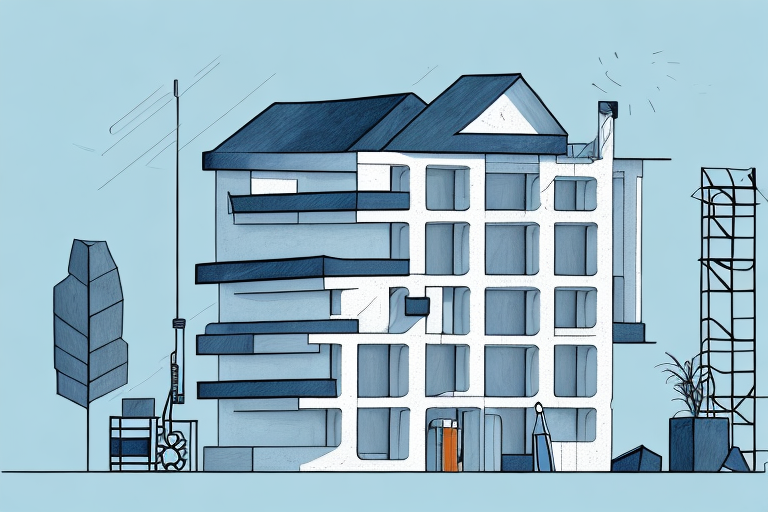Benefits of Building a Ground Floor Home
Constructing a ground floor home offers numerous advantages that make it an appealing choice for many homeowners. Here are some key benefits:
Cost-Effectiveness
Building a ground floor home is generally more affordable compared to multi-story houses. According to the National Association of Home Builders (NAHB), ground floor construction can reduce building costs by approximately 10-15% due to simpler designs and reduced structural requirements.
Accessibility
Ground floor homes are inherently more accessible, eliminating the need for stairs and reducing the risk of falls. This is particularly beneficial for individuals with mobility issues, the elderly, and families with young children.
Enhanced Outdoor Living
With direct access to outdoor spaces, homeowners can easily integrate gardens, patios, and decks. This seamless transition between indoor and outdoor living areas enhances both the aesthetic appeal and functionality of the home.
Design Flexibility
Unlike multi-story homes, ground floor residences offer greater flexibility in design and layout. Homeowners can easily modify or expand their living spaces to accommodate changing needs without significant structural alterations.
Choosing the Right Location for Your Ground Floor Home
The location of your ground floor home plays a crucial role in its overall value and your quality of life. Consider the following factors when selecting the ideal location:
Budget Considerations
Your budget will significantly influence your choice of location. Urban areas with high demand typically command higher land prices, whereas suburban or rural locations may offer more affordable options. Analyze your financial constraints and prioritize areas that offer the best value for your investment.
Proximity to Amenities
Access to essential amenities such as schools, healthcare facilities, shopping centers, and public transportation can enhance your living experience. According to the U.S. Census Bureau, proximity to amenities can also positively impact property resale value.
Workplace Accessibility
Consider the distance to your workplace to reduce commute times and enhance work-life balance. Locations with efficient transportation links can offer significant convenience and potential cost savings in daily commuting.
Neighborhood Safety and Quality
Safety is paramount when choosing a location. Research crime rates and community safety measures. Additionally, evaluate the quality of local schools if you have or plan to have children.
Future Growth and Development
Investing in areas with potential for future growth can increase your property's value over time. Investigate any planned infrastructure projects or economic developments that may enhance the area's desirability.
Planning and Regulations for Ground Floor Homes
Before commencing construction, understanding and complying with local planning regulations is essential. The planning process involves obtaining necessary permits and adhering to zoning laws.
Permits and Approvals
Obtain building permits from your local municipality to ensure that your construction meets all legal requirements. Failure to secure the appropriate permits can result in legal complications or necessitate costly modifications.
Zoning Laws
Zoning regulations dictate land use and can impact aspects such as building height, property boundaries, and land usage. Consult with your local zoning office or hire a professional planner to navigate these regulations effectively.
Working with Professionals
Engage the services of architects, engineers, and contractors who are familiar with local building codes and regulations. Their expertise can facilitate a smoother planning and construction process.
Designing Your Ground Floor Home
A well-designed ground floor home combines functionality, aesthetics, and sustainability. Consider the following elements to create your ideal living space:
Layout and Space Planning
Efficient space planning ensures that your home accommodates all your needs while maintaining an open and comfortable environment. An open floor plan can enhance the sense of spaciousness and facilitate easy movement between rooms.
Energy-Efficient Features
Incorporating energy-efficient features can significantly reduce your home's environmental impact and lower utility bills. Investments in insulation, double-paned windows, and solar panels are effective strategies. The U.S. Department of Energy highlights that solar panels can offset up to 70% of a typical home's electricity usage.
Building Materials and Techniques
Selecting sustainable and durable building materials is crucial for the longevity and environmental footprint of your home. Popular materials include:
- Concrete: Offers durability and excellent thermal mass.
- Wood: Renewable and versatile, but requires proper maintenance.
- Steel: Provides structural strength and flexibility in design.
Additionally, consider construction techniques such as prefabricated housing or energy-efficient construction methods to enhance sustainability.
Storage Solutions
Effective storage solutions help maintain an organized and clutter-free home. Incorporate built-in cabinets, closets, and shelving units to maximize space. Multi-functional furniture, such as sofa beds or storage ottomans, can further optimize storage efficiency.
Budgeting and Cost Management
Developing a comprehensive budget is essential for the successful construction of your ground floor home. Consider the following cost factors:
Cost of Land and Permits
The cost of purchasing land varies based on location, size, and market conditions. Additionally, permit fees and other regulatory costs should be factored into your budget.
Building Materials and Labor
Building materials comprise a significant portion of construction costs. Opt for materials that balance quality and affordability. Labor costs can fluctuate based on the regional market and the complexity of the project.
Additional Features and Upgrades
Incorporate potential upgrades such as energy-efficient systems, smart home technologies, or custom finishes into your budget. These enhancements can improve your home's functionality and value.
Financial Planning
Engage with a financial advisor to manage your construction budget effectively. They can assist in identifying cost-saving measures and securing appropriate financing, such as construction loans or mortgages.
Safety and Disaster Preparedness
Ensuring the safety and resilience of your ground floor home is paramount. Implement the following measures to protect your home and its occupants:
Construction Safety Measures
Utilize reinforced concrete walls and elevated foundations to enhance structural integrity. Ensure that electrical wiring and plumbing systems are properly installed and protected.
Fire Safety
Incorporate fire-resistant materials, install smoke detectors, and develop an emergency evacuation plan. According to the Federal Emergency Management Agency (FEMA), these measures can significantly reduce the risk of fire-related damage.
Natural Disaster Preparedness
Prepare your home for natural disasters such as earthquakes and floods by implementing features like:
- Elevated Foundations: Protects against floodwaters.
- Proper Drainage Systems: Prevents water accumulation and reduces flood risk.
- Reinforced Structures: Enhances resistance to earthquakes.
Additionally, maintain an emergency supply kit with essential items like water, non-perishable food, and first aid supplies.
Selling and Investment Potential
When building a ground floor home, it's important to consider its future resale value and investment potential. Here are strategies to maximize your return on investment (ROI):
Regular Maintenance and Updates
Maintain your home regularly to preserve its condition and value. Implementing updates with the latest technology and design features can make your property more attractive to potential buyers.
Enhancing Curb Appeal
A well-maintained exterior and appealing landscaping can significantly increase your home's curb appeal. Features like well-designed gardens, patios, and outdoor lighting contribute to a positive first impression.
Adding Value Through Upgrades
Invest in upgrades such as energy-efficient systems, modern kitchens, and smart home technologies. These enhancements can differentiate your property in the market and justify a higher selling price.
Working with Real Estate Professionals
Collaborate with a real estate agent specializing in ground floor homes to navigate the selling process effectively. Their expertise can help you set competitive pricing and market your home to the right audience.
Future Growth Potential
Investing in areas with significant growth potential can enhance your home's value over time. Research local development plans and economic forecasts to identify locations likely to appreciate in value.
Conclusion
Building a ground floor home presents a unique opportunity to create a comfortable, accessible, and sustainable living space tailored to your needs. By carefully considering factors such as location, design, budgeting, and safety, you can ensure that your investment yields long-term benefits. Collaborating with experienced professionals and incorporating energy-efficient and resilient features will further enhance the value and functionality of your ground floor home.






















